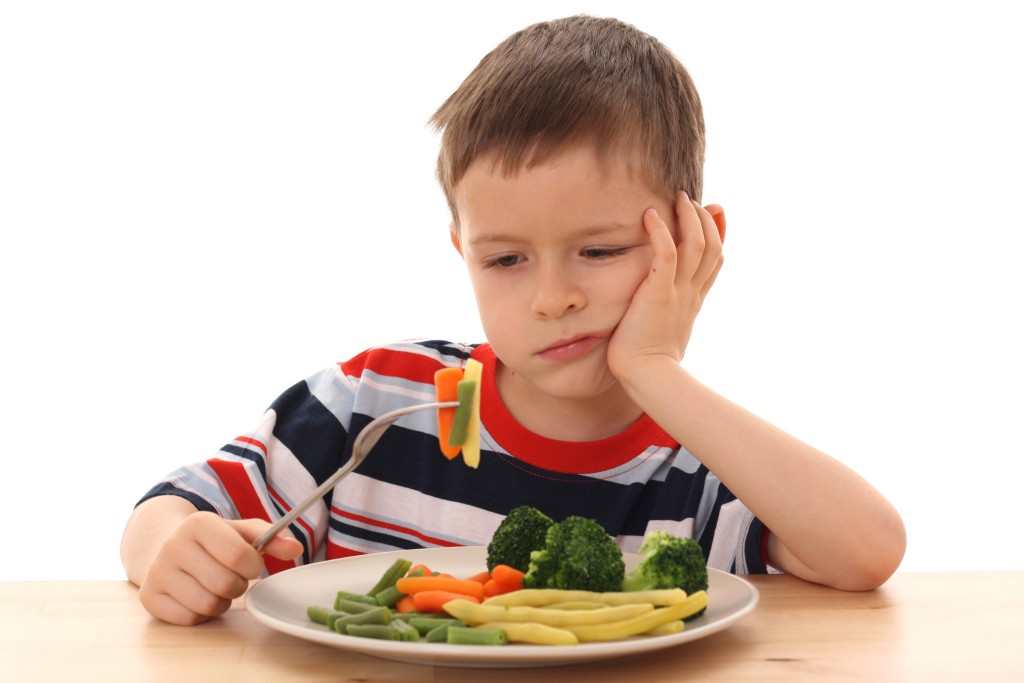Multiple times a day I hear stories of picky eaters, battles over food, and the resultant parental stress. There are books and articles galore on the subject, but for those of you who just want a quick read, here are some thoughts and strategies. If any of you have ideas to add, please feel free to post them!
And don’t feel bad for minor indiscretions here and there… it is the everyday that counts. Once in awhile treats and slip-ups are normal. How you approach food everyday and what is available for us to eat everyday in our homes is what matters most.
Have kids help you in the kitchen. Kids can do many things with you in the kitchen: pull leaves of greens off stems, break apart broccoli florets, pour spices, grind spices or nuts using a mortar and pestle, transfer chopped veggies into a (not hot) pot, and cut. For smaller kids, you can use cookie cutters or purchase kiddie choppers that are smaller variants of cookie cutters. Let them taste the foods—even the spices. Or better yet, watch them slyly as they sample the food they are responsible for preparing.
Show them where food comes from. Maybe a little garden? Data (mostly from school and community based nutrition programs) suggest that kids may try more new foods if they grow it. This is also a fun project for a parent and child to work on together. It does not have to be extensive… even just some basil, mint, garlic chives, or oregano. They are full of delicious phytonutrients, grow fairly easily, and kids will learn about food growth. They may even pick some while playing in the yard and chew on it. Yay!
Picking and eating your fruits or veggies (which includes herbs!) when they are ripe adds nutritional value as well. Store-bought goods are often plucked prior to ripening for hardiness during transport. (note: I must give my husband full credit for creating and running with our garden project over the last few years. Our kids love it. I love it. And in case you are looking for an “urban garden,” I have one and it is awesome. This one is particularly expensive. I received it as a gift, and our gardening experience literally blossomed.)
Have one meal for everyone. I mean, for the most part. Kids should not be served mac and cheese or hot dogs or even “healthy” chicken nuggets while parents are eating salmon and broccoli. One, this is way too much work for the person creating the meals at home, and two, this teaches kids that their food is somehow different from that stuff that grownups eat. The whole point is to eat real food. Obviously, this is easier if you start during infancy, but even if you don’t, you just have to go through a painful cleansing of the pantry/freezer and then stick with it. Once you make the decision, you hold a family meeting, list the things that will not be replenished once they run out, and tell the kids to prepare themselves. It may be a week or two of annoyed looks and angry demands, but eventually your child will learn that you mean business. You are the boss of your child, as it turns out.
For babies, give them real food real early. That is, transition between 6 and 9 months to table foods. I always say that by 9 months, your kids should be eating a non-choking hazard version of whatever you are eating (which is hopefully healthy. And if it is not, well, kids are the great motivator to clean up your own diet!). At this age, kids are curious. Food is exciting. And if you capitalize on their curiosity, you may get a kid who enjoys spices (yes, spices are healthy: turmeric, black pepper, cilantro, parsley, thyme, oregano). If you are worried about salt, just under-salt the food a bit. I was happy to see a recent study that supported my recommendation of feeding your kid all sorts of foods (I mean, I say go for it. Indian food, Thai food, Ethiopian food… after all, that’s what kids in those countries are eating! And veggies with flavor taste so much better than steamed-pureed mush!). Don’t worry about your child’s expression. Just keep offering and feeding.
Role Model. This is known. You can’t be eating chips and drinking soda and then say no when your kid asks for some. Parents must avoid the junk, and they must eat (and enjoy) the fruits and vegetables themselves, just like they have to wear helmets, seat belts, and all those other things that are good for prolonged health and life.
For toddlers, give them some independence. They may not want to be stuck in a highchair. You may have to negotiate a little. Let them eat at their own little table. Put a blanket or towel underneath so you are less worried about the mess.
Please no TVs/iPads/screens. It is known in adults that watching TV while you eat really blunts the brain’s ability to acknowledge satiety. Hence the term couch potato. You just keep eating. We want kids to learn to listen to their hunger cues. Kids need to stop eating when they feel full and eat when they are hungry—not just because they get to watch a screen while a parent shovels food into their mouths!
Options are ok, but they should be equally attractive/healthy options. For example, if tonight’s dinner is not suitable, how about last night’s? The major point here is that if a kid knows that his parent will make him a “kiddie” alternative, then he or she will more easily say no to a meal. However, if kiddie alternatives simply do not exist after aforementioned pantry/freezer cleanout, then food refusal will be less common. Or it may be because he is actually not hungry. And that is fine too, as long as he knows that if he gets hungry, that meal will be waiting for him—not an alternative.
For those interested in further information:




